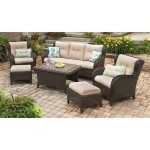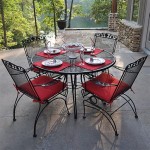The Ultimate Guide to Choosing Wood Patio Chairs and Tables
Transforming your outdoor space into an inviting and comfortable oasis requires careful consideration of the furniture you choose. Wood patio chairs and tables offer a timeless charm and natural elegance that can elevate any backyard or patio. However, with the vast array of options available, selecting the perfect pieces can be daunting.
This comprehensive guide will empower you to make an informed decision by exploring the key factors to consider when choosing wood patio chairs and tables. From understanding the different wood types to selecting the right style and size, we will cover everything you need to know to create an outdoor sanctuary that you'll cherish.
Wood Types
The type of wood used for your patio furniture will significantly impact its durability, maintenance requirements, and aesthetics. Here are the most common wood types used for outdoor furniture:
- Teak: Known for its exceptional durability and resistance to decay, teak is a premium choice for outdoor furniture.
- Redwood: Another durable wood option, redwood is naturally resistant to rot and insects, making it well-suited for outdoor use.
- Cedar: Cedar is a softwood that is naturally aromatic and resistant to decay. It is a popular choice due to its affordability and ease of maintenance.
- Cypress: Cypress is a durable and moisture-resistant wood that is often used for outdoor structures. It is a good option for furniture that will be exposed to harsh weather conditions.
Style
The style of your patio chairs and tables should complement the overall design of your outdoor space. Consider the existing architecture, décor, and landscaping to ensure a cohesive look. Here are some popular style options:
- Traditional: Traditional styles feature ornate carvings, decorative elements, and classic silhouettes.
- Modern: Modern styles prioritize clean lines, geometric shapes, and minimal ornamentation.
- Rustic: Rustic styles incorporate natural elements such as reclaimed wood, rough-hewn finishes, and distressed textures.
- Coastal: Coastal styles are inspired by beach and seaside surroundings, often featuring light-colored woods, airy designs, and woven materials.
Size
The size of your patio chairs and tables should be proportional to the space available. Measure your outdoor area carefully and consider the number of people you plan on accommodating. Here are a few tips to keep in mind:
- Chairs: Choose chairs that are comfortable to sit in for extended periods and provide adequate back support. The seat height should be approximately 18-20 inches from the ground.
- Tables: The table should provide enough space for dining, entertaining, or relaxing. A good rule of thumb is to allow 24 inches of space per person for dining tables and 18 inches for coffee tables.
- Overall space: Leave sufficient space around the furniture for people to move comfortably and avoid a cluttered appearance.
Comfort and Ergonomics
Comfort is paramount when choosing patio furniture. Ensure that the chairs provide good lumbar support and that the armrests are positioned at a comfortable height. The table should be the right height for dining or socializing without requiring excessive reaching or hunching.
Maintenance
Wood patio furniture requires regular maintenance to preserve its beauty and longevity. Different wood types have varying maintenance needs. Consider the following:
- Teak and Redwood: These woods are naturally resistant to rot and decay and require minimal maintenance. Regular cleaning and occasional oiling can enhance their appearance.
- Cedar: Cedar is soft and prone to scratching. It requires more frequent cleaning and periodic sealing to protect it from moisture.
- Cypress: Cypress is durable, but it can develop a patina over time. To maintain its original color, apply a clear sealant or stain.
Additional Considerations
In addition to the aforementioned factors, there are a few more considerations that can help you narrow down your choices:
- Finish: Choose a finish that complements the wood type and your personal style. Natural finishes showcase the wood's grain while stained or painted finishes offer more color options.
- Cushions: Cushions can enhance comfort and add a touch of color to your outdoor space. Consider weather-resistant fabrics for durability.
- Cost: Wood patio furniture can range in price depending on the wood type, style, and size. Set a budget and explore different options to find the best value for your money.
By carefully considering the factors discussed in this guide, you can make an informed decision and select wood patio chairs and tables that will enhance your outdoor space for years to come. Whether you prefer the timeless elegance of teak, the natural beauty of cedar, or the durability of redwood, there is a perfect combination waiting to transform your backyard into an outdoor sanctuary.

The Ultimate Guide To Choosing Patio Furniture For Every Season Lawn Leisure

Outmaker Modern Minimalist Outdoor Furniture Brand

Patio Furniture Guide The Home Depot
:max_bytes(150000):strip_icc()/SPR-how-to-choose-outdoor-wood-furniture-1391748-hero-ed7e785f51604def9c28f15786765796.jpg?strip=all)
What Wood Is Best For Patio Furniture

Guide Choosing The Perfect Garden Table Jysk

All You Need To Know About Choosing A Garden Table Jysk

A Guide To Choosing The Best Outdoor Furniture

How To Choose Teak Garden Furniture A Step By Guide

Tips For Choosing The Best Patio Table Patioliving

Choosing And Maintaining Outdoor Patio Furniture Comprehensive Guide
Related Posts








